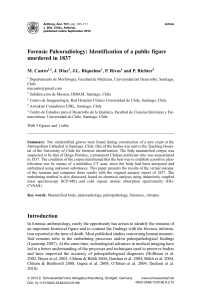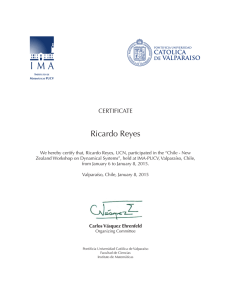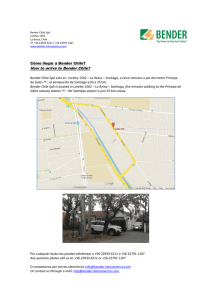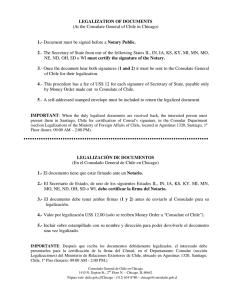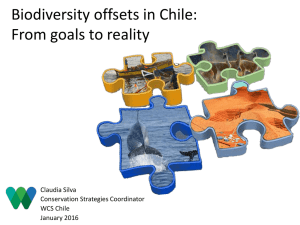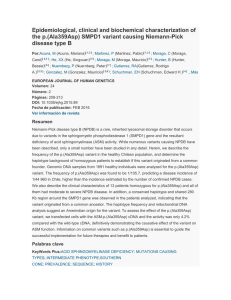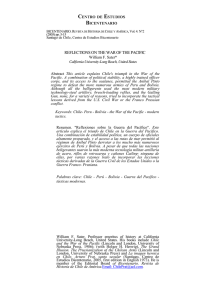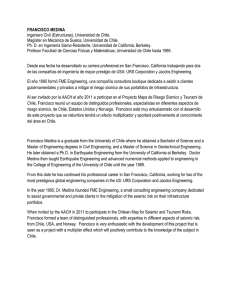Human land use and biodiversity under a changing climate. Pablo A
Anuncio
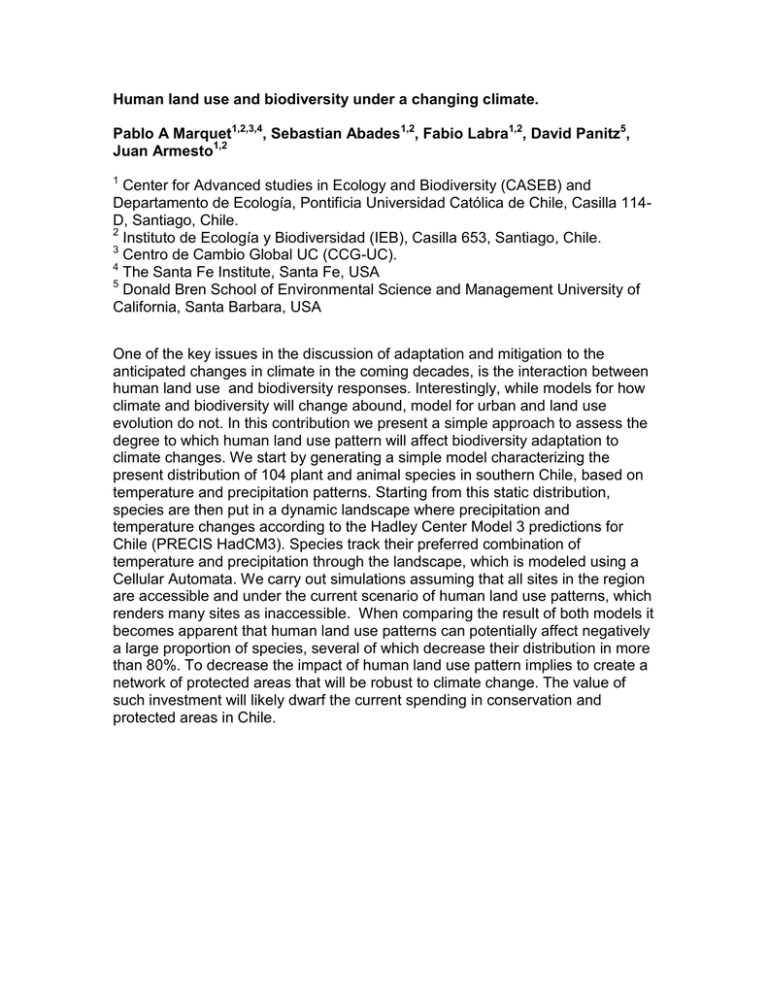
Human land use and biodiversity under a changing climate. Pablo A Marquet1,2,3,4, Sebastian Abades1,2, Fabio Labra1,2, David Panitz5, Juan Armesto1,2 1 Center for Advanced studies in Ecology and Biodiversity (CASEB) and Departamento de Ecología, Pontificia Universidad Católica de Chile, Casilla 114D, Santiago, Chile. 2 Instituto de Ecología y Biodiversidad (IEB), Casilla 653, Santiago, Chile. 3 Centro de Cambio Global UC (CCG-UC). 4 The Santa Fe Institute, Santa Fe, USA 5 Donald Bren School of Environmental Science and Management University of California, Santa Barbara, USA One of the key issues in the discussion of adaptation and mitigation to the anticipated changes in climate in the coming decades, is the interaction between human land use and biodiversity responses. Interestingly, while models for how climate and biodiversity will change abound, model for urban and land use evolution do not. In this contribution we present a simple approach to assess the degree to which human land use pattern will affect biodiversity adaptation to climate changes. We start by generating a simple model characterizing the present distribution of 104 plant and animal species in southern Chile, based on temperature and precipitation patterns. Starting from this static distribution, species are then put in a dynamic landscape where precipitation and temperature changes according to the Hadley Center Model 3 predictions for Chile (PRECIS HadCM3). Species track their preferred combination of temperature and precipitation through the landscape, which is modeled using a Cellular Automata. We carry out simulations assuming that all sites in the region are accessible and under the current scenario of human land use patterns, which renders many sites as inaccessible. When comparing the result of both models it becomes apparent that human land use patterns can potentially affect negatively a large proportion of species, several of which decrease their distribution in more than 80%. To decrease the impact of human land use pattern implies to create a network of protected areas that will be robust to climate change. The value of such investment will likely dwarf the current spending in conservation and protected areas in Chile.


